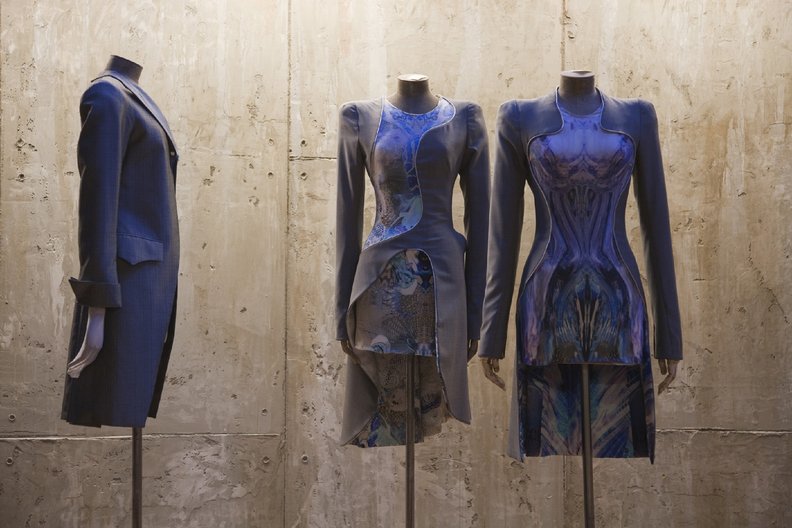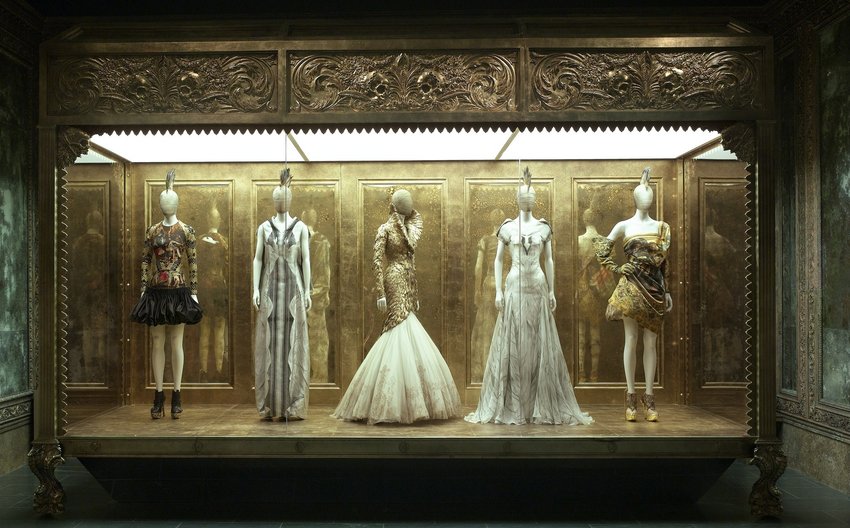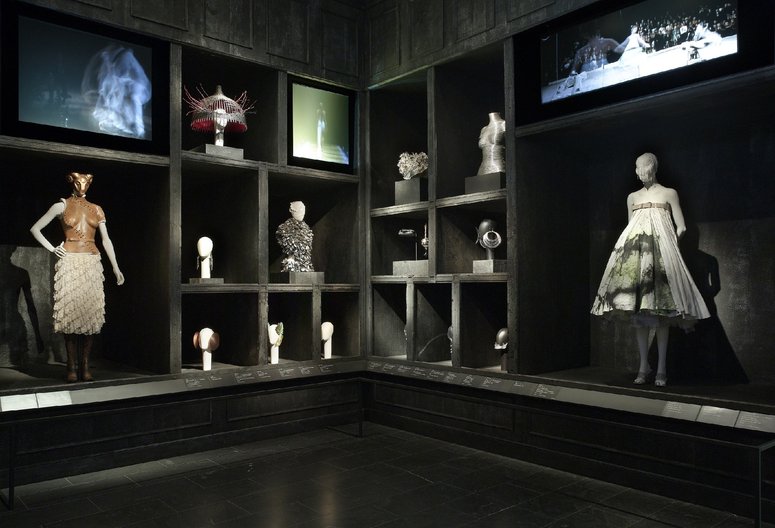7 September 2011
by Alison Moloney
I was in New York last month to see the now infamous exhibition Alexander McQueen: Savage Beauty at The Metropolitan Museum of Art before it closed. The retrospective on the late British designers work attracted both local and international attention with 661,509 visitors during its three month run. Savage Beauty is the eighth most popular exhibitions held at the Met in its 141 year history joining other blockbuster exhibitions including The Treasures of Tutankhamun (1978) and Mona Lisa (1963).
Despite the crowded galleries the exhibition lived up to its hype as the impact of McQueen’s all too-brief career was honoured. Andrew Bolton, the exhibition’s curator, distilled McQueen’s prolific work by selecting recurring themes - his signature silhouettes and technical ingenuity, his historical referencing and his homage to his Scottish heritage and fascination with British history. The theatrical shows which were synonymous with McQueen’s catwalks were brought to life in the galleries through the dramatic exhibition design by long-term collaborators Sam Gainsbury and Joseph Bennett the exhibition’s creative director and production designer, respectively, and production designers for McQueen’s shows.
Throughout his career McQueen continually pushed the accepted boundaries of beauty and his obsession with life and death, beauty and decay was frequently misunderstood. The success of the exhibition and the diverse audience it attracted is testament to a designer who developed an internationally acclaimed and coveted label without compromising his approach.
British design was also paramount in the exhibition Talk To Me: Design and Communication between People and Objects at the Museum of Modern Art. Curated by Paulo Antonelli the exhibition focuses objects which communicate through forms including text, touch or graphic interfaces. This broad definition was reflected in the array of projects which varied from the speculative and playful through to the functional and everyday.
UK-based work includes Rivital Cohen Disclosure Case - a case which contains information on the inheritor’s genetic traits allowing the user to decide if they want open it to know their fate. Clara Gaggero and Adrian Westaway’s Out of the Box, an easy to understand mobile phone instruction manual specially aimed at senior citizens was shown alongside the Here and There map by BERG. This map uses sophisticated modelling software which places the viewer in the city as the streets of New York fold upwards.
Down in the East Village, the Guggenheim Museum and BMW launched the first of a series of internationally touring BMW Guggenheim Lab. The Lab was a minimal ‘pop-up’ structure designed by Tokyo-based architects Atelier Bow-Wow which housed free films, talks and events on the theme Confronting Comfort; exploring notions of individual and collective comfort and the urgent need for environmental and social responsibility.
One project which addresses some of these issues is the High Line a disused elevated railway which is now a park in the sky. The second phase of the line had just opened extending the park to one mile. The High Line is located on Manhattan's West Side and was built in the 1930s removing dangerous freight traffic from street level in one of Manhattan’s largest industrial districts. Trains ceased to run on the line in the 1980 and in 1999 Friends of the High Line, a community-based non-profit group, formed when the historic structure was under threat of demolition. Friends of the High Line works in partnership with the City of New York to preserve and maintain the structure as an elevated public park which is a perfect retreat on a hot Manhattan afternoon.



